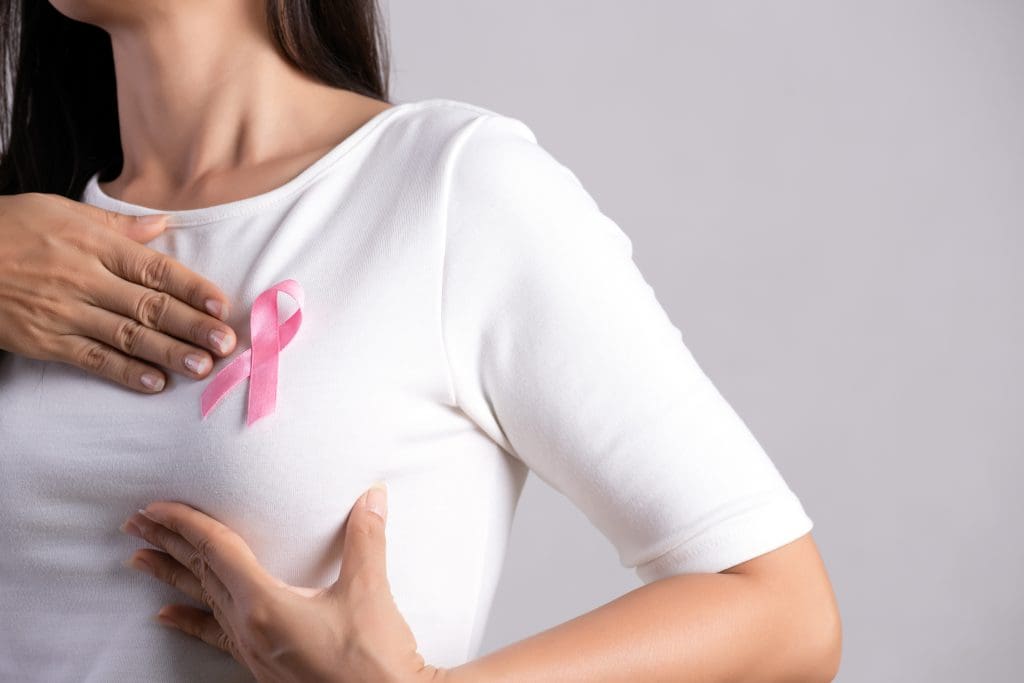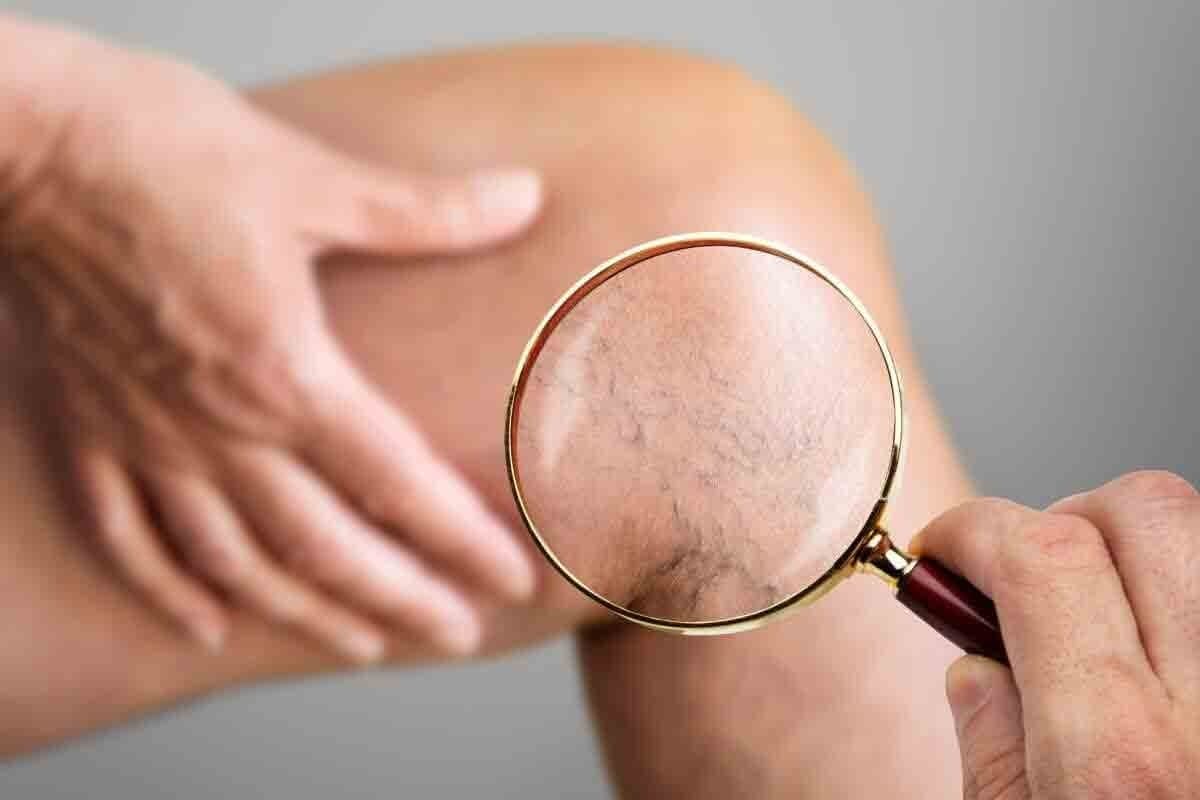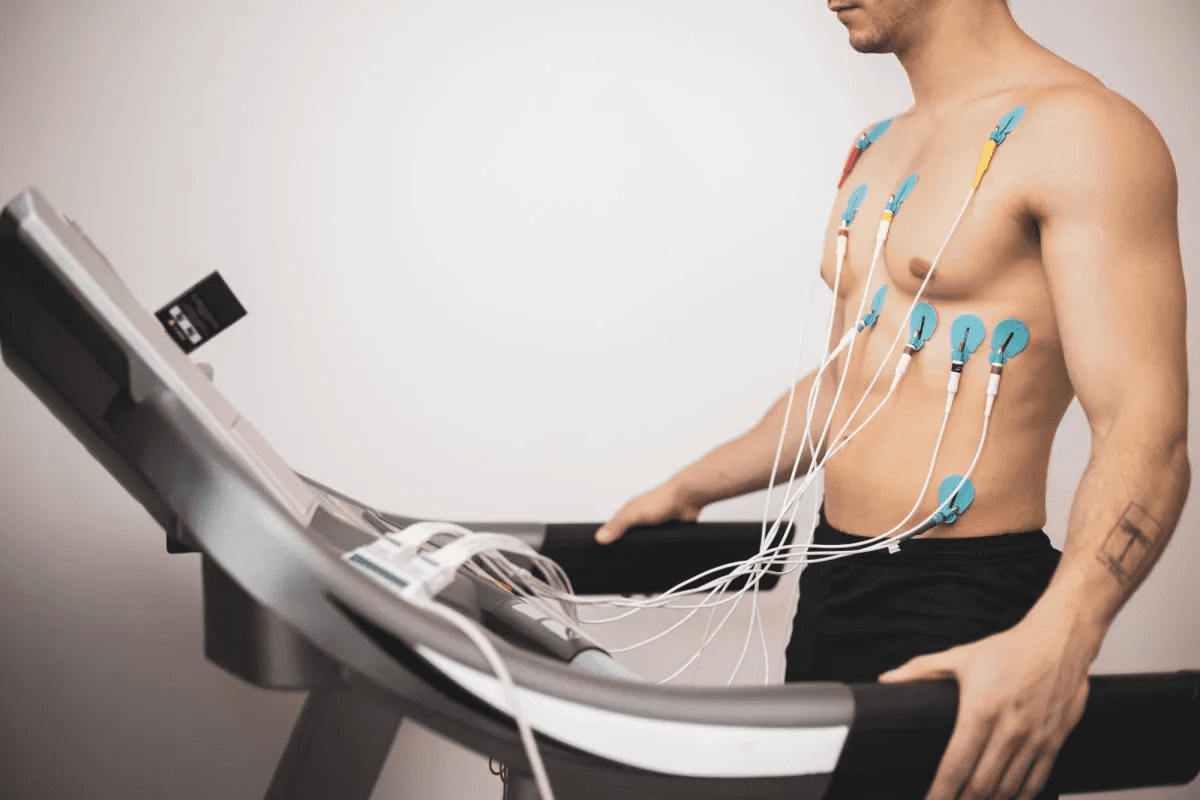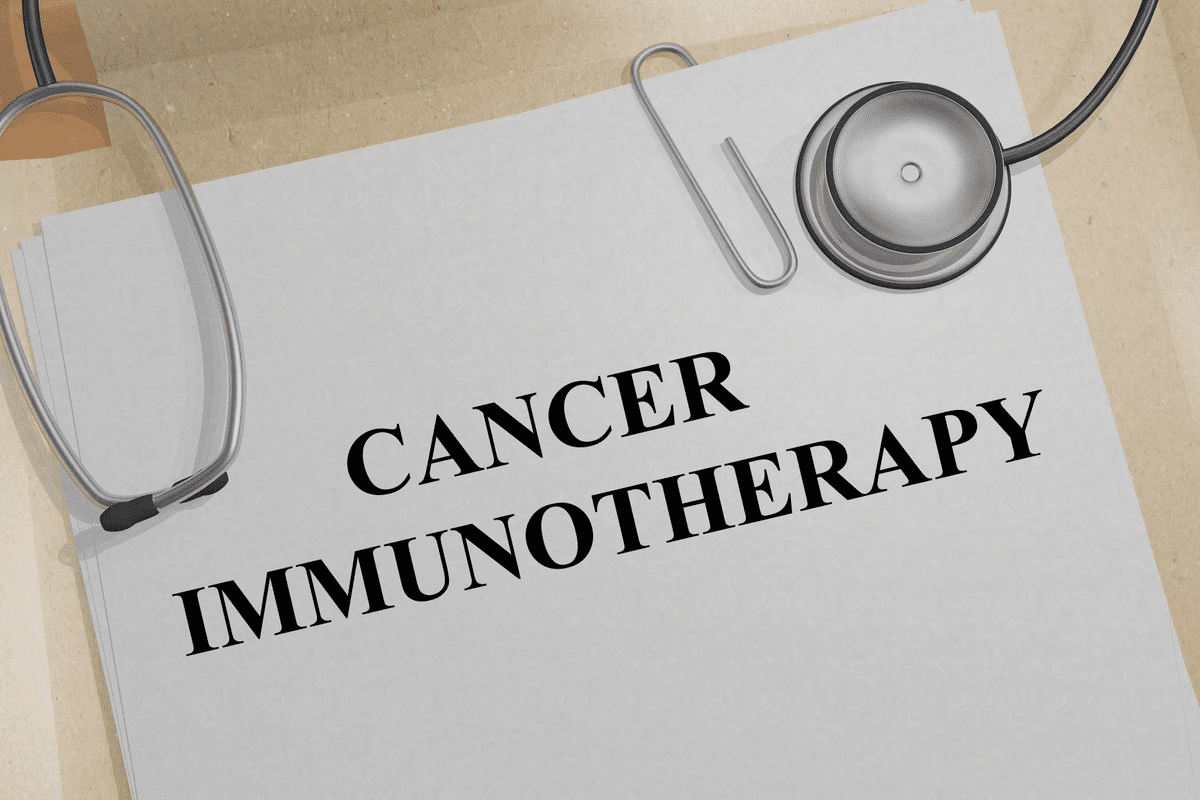Last Updated on November 27, 2025 by Bilal Hasdemir
What causes breast cancer? Breast cancer starts with cells growing out of control in the breast tissue. The Mayo Clinic says most cases’ exact cause is unknown. But, research has found several risk factors.
These factors include hormonal influences, lifestyle choices, and environmental exposures. Knowing these is key to understanding your risk and maybe lowering it.
Key Takeaways
- Breast cancer risk is influenced by a combination of genetic, hormonal, and environmental factors.
- Lifestyle choices and certain exposures may contribute to the risk.
- Research continues to uncover the complex causes of breast cancer.
- Understanding risk factors is key to prevention and early detection.
- Consulting credible sources like the Mayo Clinic can provide valuable insights.
Understanding Breast Cancer

To understand breast cancer, we need to know its causes and how it develops. It’s a condition where cells in the breast grow out of control.
What Is Breast Cancer?
Breast cancer is a malignant neoplasm of the breast. It’s when abnormal cells in the breast tissue grow uncontrollably. This happens when the DNA in breast cells gets damaged, causing them to divide improperly.
“Breast cancer is a disease in which cells in the breast grow abnormally. There are different kinds of breast cancer. The kind depends on which cells in the breast become cancer.” –
American Cancer Society
How Breast Cancer Develops
Breast cancer starts with DNA damage in breast cells. A cell’s DNA tells it what to do. In healthy cells, DNA tells them to grow and multiply at a certain rate.
In cancer cells, DNA changes give different instructions. This tells the cells to make more cells quickly.
| Stage | Description |
| Initiation | DNA damage occurs in breast cells. |
| Progression | Damaged cells grow and multiply uncontrollably. |
| Metastasis | Cancer cells spread to other parts of the body. |
Genetic Factors That Increase Breast Cancer Risk
Understanding the genetic causes of breast cancer is key to finding those at higher risk. Genetic mutations greatly affect a person’s chance of getting breast cancer.
BRCA1 and BRCA2 Mutations
Changes in genes like BRCA1 and BRCA2 raise the risk of breast and ovarian cancer. The CDC says these are top genetic risks for breast cancer. Women with these mutations face a higher risk of breast cancer at a younger age.
Other Genetic Mutations
Other than BRCA1 and BRCA2, other mutations also up the risk. Genes like TP53, PTEN, and CDH1 are linked to syndromes that raise breast cancer risk. Knowing about these mutations helps gauge overall risk.
Family History and Hereditary Risk
A family history of breast cancer, mainly in first-degree relatives, boosts risk. Having many relatives with breast cancer, and if they were young, points to a hereditary link.
| Genetic Factor | Description | Risk Level |
| BRCA1 Mutation | Inherited mutation in BRCA1 gene | High |
| BRCA2 Mutation | Inherited mutation in BRCA2 gene | High |
| Other Genetic Mutations | Mutations in genes like TP53, PTEN, CDH1 | Moderate to High |
| Family History | Presence of breast cancer in first-degree relatives | Moderate |
Hormonal Causes of Breast Cancer
Breast cancer risk is linked to hormonal factors, mainly estrogen levels. Knowing these factors helps us understand breast cancer risks better.
Estrogen Exposure and Risk
Estrogen plays a big role in breast cancer. The more estrogen a woman is exposed to, the higher her risk. This exposure can be affected by menstrual history and reproductive choices.
Menstrual History
Women who start menstruating early or menopause late are at higher risk. The CDC says early menstruation and late menopause mean more hormone exposure.
Pregnancy and Breastfeeding
Pregnancy and breastfeeding change estrogen levels, affecting breast cancer risk. Women who have children later or never may face higher risks due to more estrogen.
Hormonal Medications
Hormonal meds, like birth control and hormone therapy, can change hormone levels. This can affect breast cancer risk.
Birth Control Pills
Birth control pills slightly raise breast cancer risk, mainly during and right after use. But this risk drops over time after stopping.
Hormone Replacement Therapy
Hormone therapy for menopause can also raise breast cancer risk. The risk depends on the type of therapy and how long it’s used. Combined estrogen and progesterone therapy increases risk more than estrogen-only therapy.
Understanding hormonal effects on breast cancer risk helps women make better health choices. This includes knowing about hormonal meds and managing risk factors.
Age, Gender, and Demographic Risk Factors
Age, gender, and other demographic factors greatly influence the risk of breast cancer. Knowing these can help you understand your own risk. This knowledge is key to making smart health choices.
Why Risk Increases with Age
The risk of breast cancer grows with age, with most cases found in women over 50, as the CDC reports. This rise is due to genetic damage and hormone level changes over time.
Male Breast Cancer
While breast cancer is more common in women, men can also get it. Male breast cancer is rare, making up about 1% of all cases. Factors that increase a man’s risk include older age, family history, and certain genetic mutations.
Racial and Ethnic Factors
Breast cancer rates and death rates differ among racial and ethnic groups. For example, white women are more likely to get breast cancer, but African American women are more likely to die from it. These differences show the need for targeted screening and better healthcare access.
- Age: Risk increases after age 50.
- Gender: More common in women, but men can also be affected.
- Racial and Ethnic Background: Varied incidence and mortality rates.
Lifestyle Factors That Contribute to Breast Cancer
Some lifestyle choices can raise the risk of breast cancer. Knowing these can help people make better choices to lower their risk.
Alcohol Consumption
Drinking alcohol can increase breast cancer risk. The more alcohol a woman drinks, the higher her risk. The CDC says alcohol is a big factor in breast cancer risk.
Diet and Obesity
Diet and obesity are key factors in breast cancer risk. Being overweight or obese, more so after menopause, raises the risk.
Body Weight and Fat Distribution
Body weight and fat distribution are important in breast cancer risk. Belly fat is linked to a higher risk.
Dietary Patterns
Eating lots of fruits, veggies, and whole grains can lower risk. But, a diet full of processed foods and saturated fats can increase it.
Physical Inactivity
Not being active is another risk factor for breast cancer. The CDC says inactive women face a higher risk.
| Lifestyle Factor | Impact on Breast Cancer Risk |
| Alcohol Consumption | Increases risk |
| Obesity | Increases risk, specially after menopause |
| Physical Inactivity | Increases risk |
Understanding and changing these lifestyle factors can lower breast cancer risk. Making smart choices about alcohol, diet, obesity, and activity can improve health and well-being.
Environmental Causes of Breast Cancer
Some environmental factors can raise the risk of breast cancer. Knowing these risks helps in prevention and early detection.
Radiation Exposure
Women who got radiation therapy to the chest or breasts before 30 face a higher risk of breast cancer. This is because radiation can harm DNA, leading to cancer. Early radiation therapy increases this risk a lot.
Chemical Exposures and Pollutants
Chemicals and pollutants in our environment also raise breast cancer risk. Some chemicals can act like or block hormones, leading to cancer.
Endocrine Disruptors
Endocrine disruptors are chemicals that mess with our hormonal system. Examples include plastics, pesticides, and personal care products. These can change hormone levels and affect breast cancer risk.
Workplace Exposures
Some jobs expose people to chemicals that may increase breast cancer risk. For example, certain industries have known carcinogens. Knowing workplace risks is key to prevention.
Breast Cancer Signs and Symptoms
Knowing the common signs and symptoms of breast cancer is key. It helps in early detection and treatment. Changes in the breast can be noticed through self-examination or a medical check-up.
Common Signs to Watch For
The signs and symptoms of breast cancer include:
- A new lump in the breast or underarm area.
- Thickening or swelling of part of the breast.
- Irritation or dimpling of breast skin.
- Redness or flaky skin in the nipple area or the breast.
- Pulling in of the nipple or pain in the nipple area.
- Nipple discharge other than breast milk, including blood.
- Any change in the size or the shape of the breast.
- Pain in any area of the breast.
Seeing these signs doesn’t mean you have breast cancer. But, it’s important to talk to a doctor if you notice them.
When to See a Doctor
If you see any unusual changes in your breasts, see a doctor. Early detection is vital for effective treatment. Don’t wait for your next mammogram if you notice any signs.
It’s always better to be safe than sorry. Your doctor can check your symptoms. They might suggest tests like a mammogram, ultrasound, or biopsy.
Being proactive about your breast health can greatly impact treatment outcomes.
Breast Density and Other Physical Risk Factors
Knowing about physical risk factors for breast cancer is key. This includes breast density. Other physical traits can also affect your risk.
Understanding Breast Density
Breast density is how much fatty, fibrous, and glandular tissue is in your breasts. Dense breasts can make it tough to spot cancer on a mammogram. Women with dense breasts are more likely to get breast cancer, the CDC says. There are four types of breast density.
Previous Breast Conditions
Previous breast conditions can also affect your risk. These can be benign or malignant.
Benign Breast Conditions
Benign breast conditions, like fibroadenomas or cysts, are not cancerous. But, having them might slightly raise your risk. It’s smart to keep an eye on them.
Previous Breast Cancer
Having had breast cancer before is a big risk factor. It could be in the same or the other breast. It’s important to get regular check-ups if you’ve had breast cancer before.
| Risk Factor | Description | Impact on Risk |
| Breast Density | Amount of fatty, fibrous, and glandular tissue | Increased risk with higher density |
| Benign Breast Conditions | Non-cancerous conditions like fibroadenomas or cysts | Slightly increased risk |
| Previous Breast Cancer | History of breast cancer | Significant risk for new breast cancer |
Reducing Your Risk of Breast Cancer
You can lower your risk of breast cancer by making lifestyle changes and taking preventive steps. Knowing and using these strategies can greatly reduce your chance of getting breast cancer.
Lifestyle Modifications
Healthy lifestyle choices are key to lowering breast cancer risk. This means eating right, exercising regularly, and drinking less alcohol.
Diet and Exercise Changes
Eating a diet full of fruits, veggies, and whole grains, and staying active, can help. Aim for at least 150 minutes of moderate-intensity exercise or 75 minutes of vigorous-intensity exercise per week.
Limiting Alcohol
Drinking less alcohol is also good. Limiting alcohol to one drink a day for women can help lower risk.
Preventive Medications and Procedures
For some, taking preventive medicines or undergoing surgery may be advised to lower breast cancer risk.
Chemoprevention Options
Medicines like tamoxifen and raloxifene can lower breast cancer risk in high-risk women. It’s important to talk to a healthcare provider about these options.
Preventive Surgery
For those with high genetic risk, preventive mastectomy might be considered. This should be discussed with healthcare professionals after careful thought.
| Risk Reduction Strategy | Description | Benefit |
| Diet and Exercise | Balanced diet and regular physical activity | Reduces overall cancer risk |
| Limiting Alcohol | Reduce alcohol intake | Lowers breast cancer risk |
| Chemoprevention | Medications to prevent cancer | Effective for high-risk individuals |
Conclusion
Breast cancer is a complex disease. Understanding its causes is key for prevention and early detection. Many factors contribute to the risk, like genetic mutations and hormonal influences.
Age, lifestyle choices, and environmental exposures also play a role. While some risks, like family history, can’t be changed, others can be reduced. This is through lifestyle changes and preventive actions.
Being aware of these risks and taking proactive steps can lower the chance of getting breast cancer. This is important for prevention and early detection.
In summary, understanding breast cancer’s causes is essential. By knowing the risks and taking steps to reduce them, people can lower their risk. This improves their chances of successful treatment if they are diagnosed.
FAQ
What is breast cancer?
Breast cancer starts in the breast tissue. It happens when abnormal cells grow and multiply without control, forming a tumor.
What are the risk factors for breast cancer?
Risk factors include genetic mutations, family history, hormonal factors, age, lifestyle, and environmental exposures.
How does BRCA1 and BRCA2 mutation affect breast cancer risk?
BRCA1 and BRCA2 mutations greatly increase breast cancer risk. They also raise the risk of ovarian cancer.
Can men get breast cancer?
Yes, men can get breast cancer, though it’s rare. It’s often linked to genetic mutations, like BRCA2.
How does age affect breast cancer risk?
Breast cancer risk grows with age. Most cases are found in women over 50.
What lifestyle factors contribute to breast cancer risk?
Lifestyle factors include alcohol, obesity, lack of exercise, and a diet full of processed foods.
Can radiation exposure cause breast cancer?
Yes, radiation, mainly at a young age, can raise breast cancer risk.
What are the common signs and symptoms of breast cancer?
Signs include a new lump, changes in size or shape, nipple discharge, and skin changes.
How can I reduce my risk of breast cancer?
Reduce risk with a healthy lifestyle. Eat well, exercise, limit alcohol, and avoid harmful chemicals and radiation.
What is breast density, and how does it affect breast cancer risk?
Breast density is the amount of dense tissue. Women with dense breasts face higher cancer risk. Dense breasts also make mammograms less clear.
Are there any preventive measures for breast cancer?
Yes, preventive steps include medications like tamoxifen and raloxifene. Surgical options like mastectomy or salpingo-oophorectomy are also available for high-risk individuals.





